Does the easternmost point in Georgia offer fishing? It most certainly does. And not just any type of angling – Tybee Island is famous for its superb deep sea angling opportunities. If you’re curious to see what gems these pirates’ waters hide, then deep sea fishing in Tybee Island is exactly what you need.

Did we say pirates’ waters? Yes, Tybee Island used to be a pirates’ refuge. Luckily, the island has kept its tradition of being a safe haven alive and it continues to provide shelter for numerous land and aquatic creatures. We’re especially interested in the deep sea treasures. And that’s exactly what we’ll focus on in this article.
Are you ready for a deep sea fishing adventure? Keep on reading and find out more about Tybee Island’s deep sea residents, their hideouts, and the most productive ways of reeling them in. Near the end, we’ll cover some deep sea fishing regulations and try to answer the most frequently asked questions. From fish species to hotspots, we’ll leave no stone unturned. Read on.
Top Tybee Island Deep Sea Fishing Catches
With the Gulf Stream and Atlantic Ocean at its doorstep, Tybee Island promises a clash with some serious titans. But deep sea fishing isn’t only reserved for testing your skills against giants. There’s something for everyone. Let’s take a look at the top Tybee Island deep sea catches.
Snappers and Groupers
If you’d like to warm up before conquering awe-inspiring sea beasts, kick off your Tybee Island deep sea fishing journey with Snappers and Groupers. They’re photogenic, fun to catch, and many of them will treat you with finger-licking bites. Unlike the rest of the game fish we’ll mention, Snappers and Groupers are bottom dwellers and they tend to cohabitate.

Snappers and Groupers patrol the seafloor around natural and artificial reefs and wrecks. This means that instead of trolling, you’ll be targeting them by bottom fishing. Serve them their favorite food and they won’t be able to resist your bait. Squid, minnows, and shrimp are their kryptonite.
Vermillion, Red, and Mutton Snapper are the most commonly encountered Snappers, while Red, Scamp, and Gag Groupers will be your Grouper combatants when bottom fishing off Tybee Island.
Mahi Mahi
There’s no dilemma about Mahi Mahi topping Tybee Island’s deep sea fishing list. These gorgeous animals are on everyone’s radar thanks to their enviable fighting abilities and picture-perfect looks. Who wouldn’t want to break a sweat while fishing and then snap a memorable photo with their trophy catch? We know we would. And Mahi Mahi are here to grant these wishes.
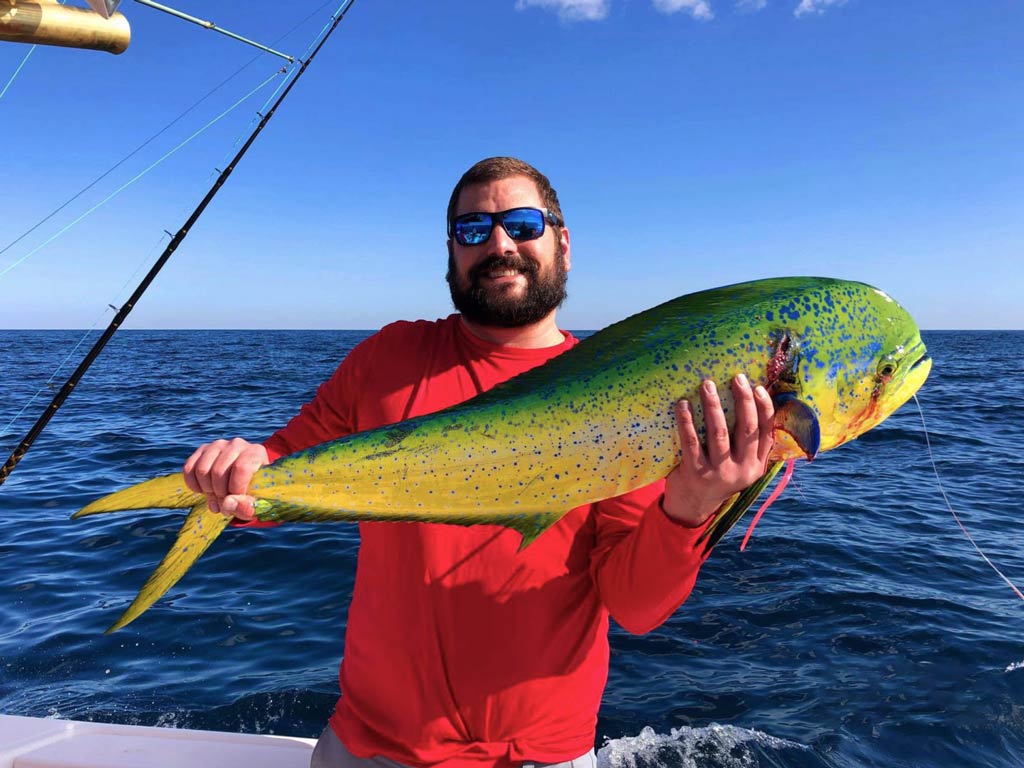
Before you roll your sleeves up and start reeling Mahi Mahi in, you have to lure them your way. Luckily, they’re better fighters than they are thinkers. This means you won’t struggle to outsmart them as they’ll fall for any decoy. Show them some ballyhoo and they’ll pop up in no time.
You’ll usually start noticing them in the warm Gulf Stream waters. But they can be found anywhere between 15 and 80 miles from the shore. Mahi Mahi patrol the area around floating debris and other artificial structures in search of food. Once you spot them, you can practice casting, but fast trolling is usually the name of the game prior to that.
King Mackerel
If you’re into fast and furious adversaries, think about King Mackerel as your Tybee Island deep sea fishing target. Aggressive and merciless, King Mackerel are a force to be reckoned with. Sure, Mahi Mahi can pull and go airborne, but King Mackerel outperform them with acrobatic leaps and unpredictable runs. So, if you want to up your game, King Mackerel is your next rival.
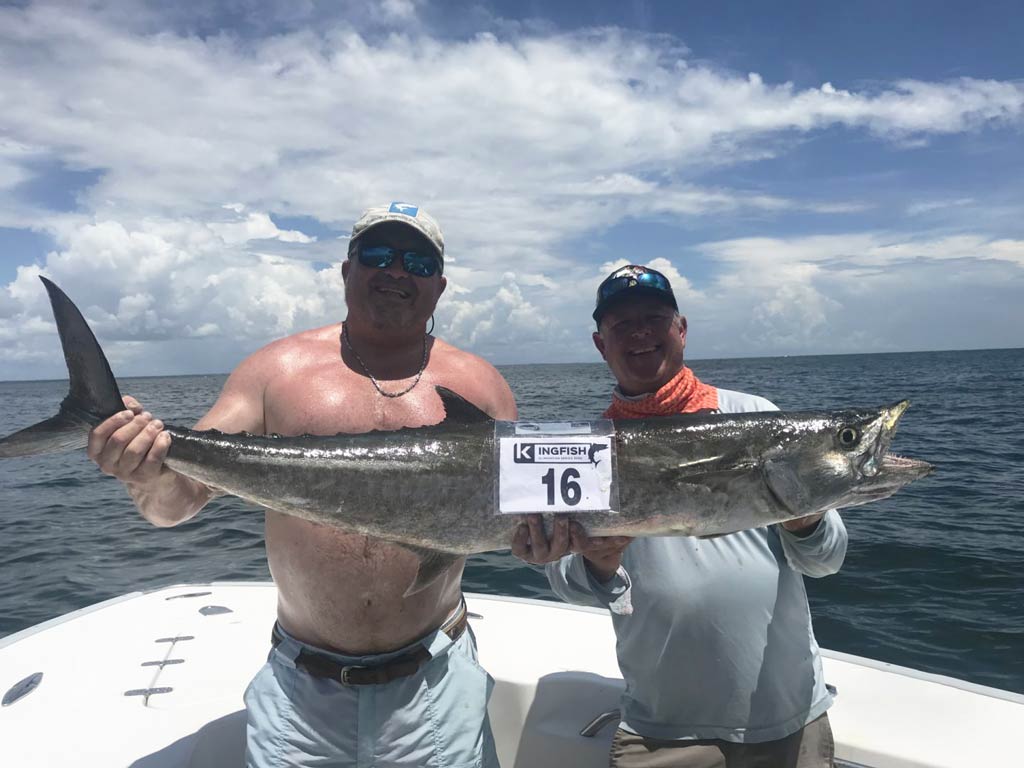
You don’t have to be a pro to land them, but you have to be ready for an endless tug-of-war game. Similar to Mahi Mahi, the job is half-done once you locate them. Kings are migratory species avoiding turbid waters and temperatures below 70 degrees.
More impressive specimens are difficult to find because they’re solitary creatures, but they aren’t impossible to come by. You’ll have better chances at crossing paths with them when you hit the 20-mile mark. Slow-paced trolling with live bait or strip baits usually attracts bigger Mackerel, whereas fast trolling is a magnet for smaller fish.
Sailfish
We’ve gradually introduced you to your potential Tybee Island opponents, ordering them from the most interesting to the most challenging. With Sailfish you’ve reached boss level. While Georgia’s coast isn’t brimming with overly intimidating beasts, you’ll still have the chance to run into an occasional monster when deep sea fishing off Tybee Island during summer.
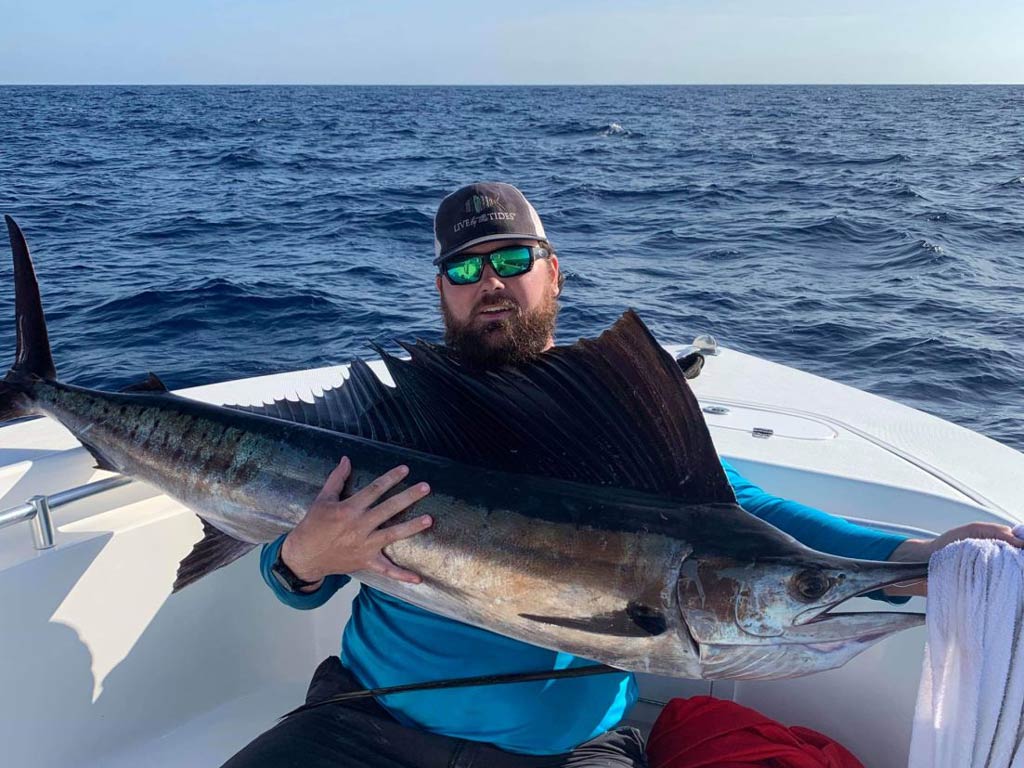
As with any fast predator, trolling whole mullet or ballyhoo is the preferred method for grabbing a Sailfish’s attention. However, unlike other Billfish, Sailfish are an excellent light tackle game fish, too. They’re also surface lovers, so you’ll find them feeding near the water tops. Once hooked, they won’t go down without a fight. Expect spectacular leaps, striking moves, and incredible bragging stories. Tight lines!
… And More!
You mean there are more species out there? Of course! Deep sea fishing in Tybee Island is so much more than its headliners. Besides Snappers, Groupers, Mahi Mahi, King Mackerel, and Sailfish, don’t be surprised if you stumble upon Spanish Mackerel, Barracuda, and Wahoo as well. These speedsters guarantee an unforgettable action-packed experience.
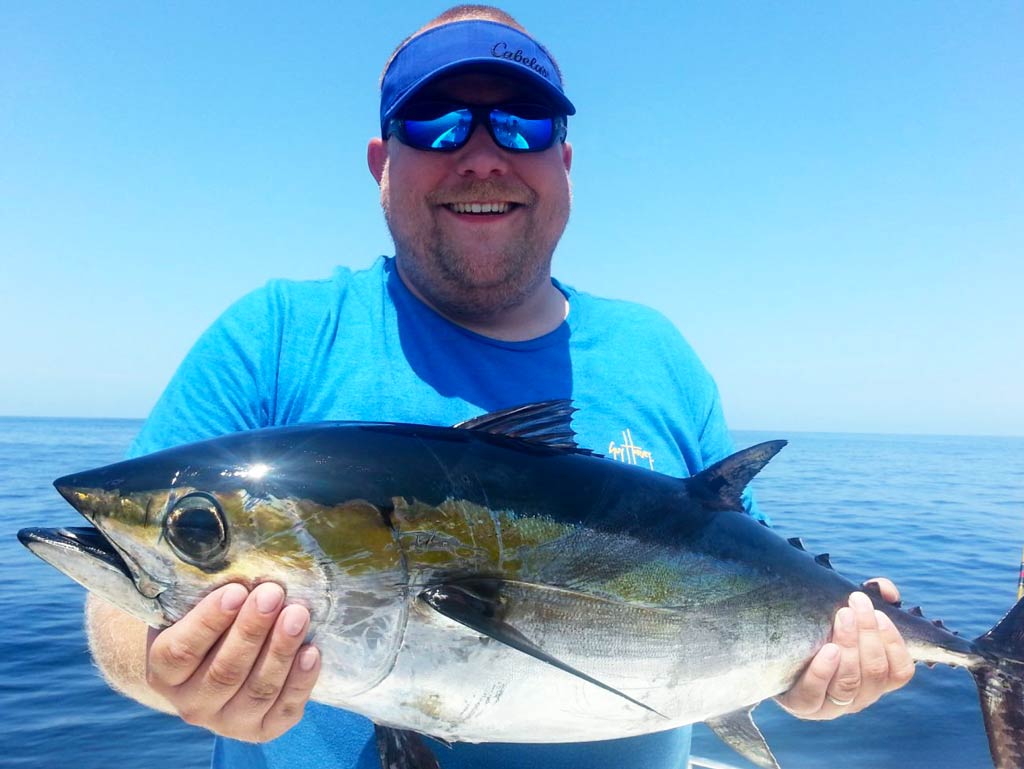
It’s not uncommon to run across Blackfin Tuna, Cobia, and Amberjack, ether. All three are spectacular rivals. You can even end up with Sheepshead and Black Seabass when fishing in the nearshore realm. All in all, Tybee Island doesn’t lack deep sea creatures. All you have to do is pack up and check it out for yourself.
When should I go Tybee Island deep sea fishing?
Deep sea fishing off Tybee Island is a year-round activity. However, while you can wet your line in these waters any time of the year, you might not end up with what you initially wanted. So, if you have a specific fish in mind you’d like to go after, align your deep sea quest with its season. Otherwise, feel free to visit Tybee Island whenever you want and have a blast.
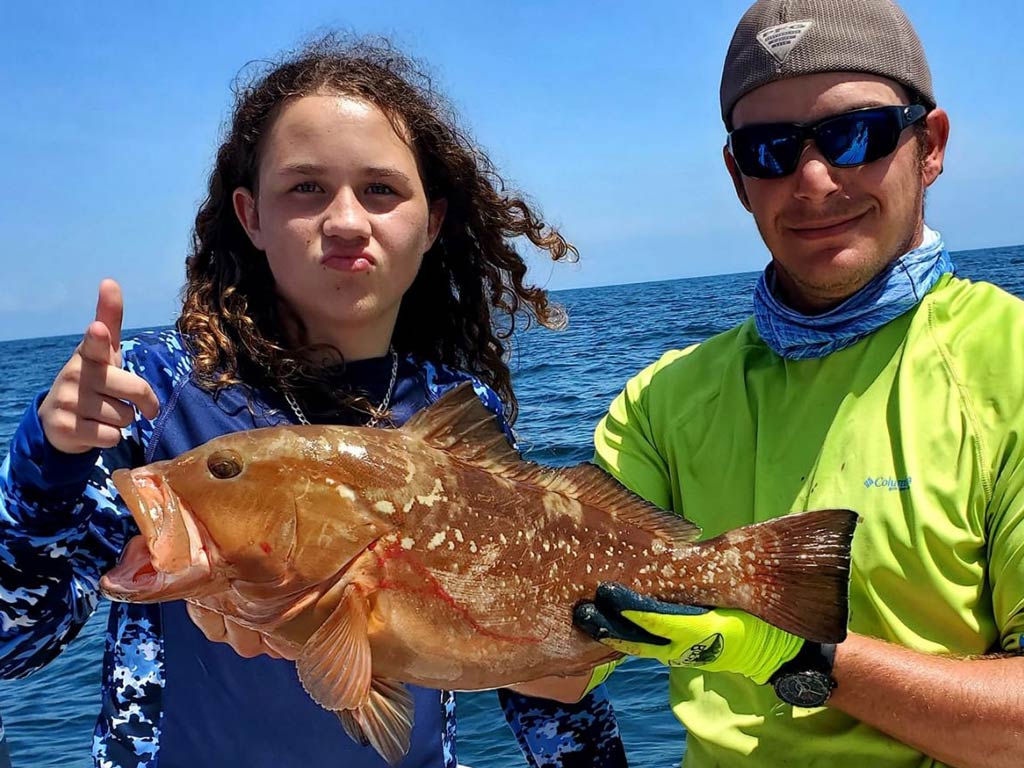
Here are a few tips regarding Tybee Island’s deep sea fishing seasons to get you going. Species like Wahoo and Sailfish love the warm water and summer months. Barracuda share their enthusiasm, so you’ll have more luck at landing them between May and October. Meanwhile, Mahi Mahi are regulars in the Gulf Stream.
Black Seabass is a year-round game fish. The same goes for Vermillion Snapper and Gag Grouper in offshore waters. Meanwhile, King Mackerel and Cobia are going strong between spring and fall. Long story short, there’s always something to grace the end of your line but if you’ve set your mind on a particular prize, keep an eye on their season.
How can I go Tybee Island deep sea fishing?
Let’s start with the obvious – deep sea fishing is quite an endeavor and you’ll need a helping hand for exploring Tybee Island’s depths. The safest and easiest way of doing this is by teaming up with a licensed charter operator. Not only will they provide you with a first-class boat and top-notch equipment, but they’ll take you where the fish are biting.

Seasoned captains know where the hotspots are and when your target will frequent them. Plus, they know all the tips and tricks to convince the fish to come out and play. As if that wasn’t enough, Tybee Island deep sea fishing charters usually take care of all the permits and licenses, too.
All you have to do is book a charter and focus on different fishing techniques to overpower that deep sea monster of yours. Let’s take a look at what angling methods you could practice when deep sea fishing with your captain.
Bottom Fishing
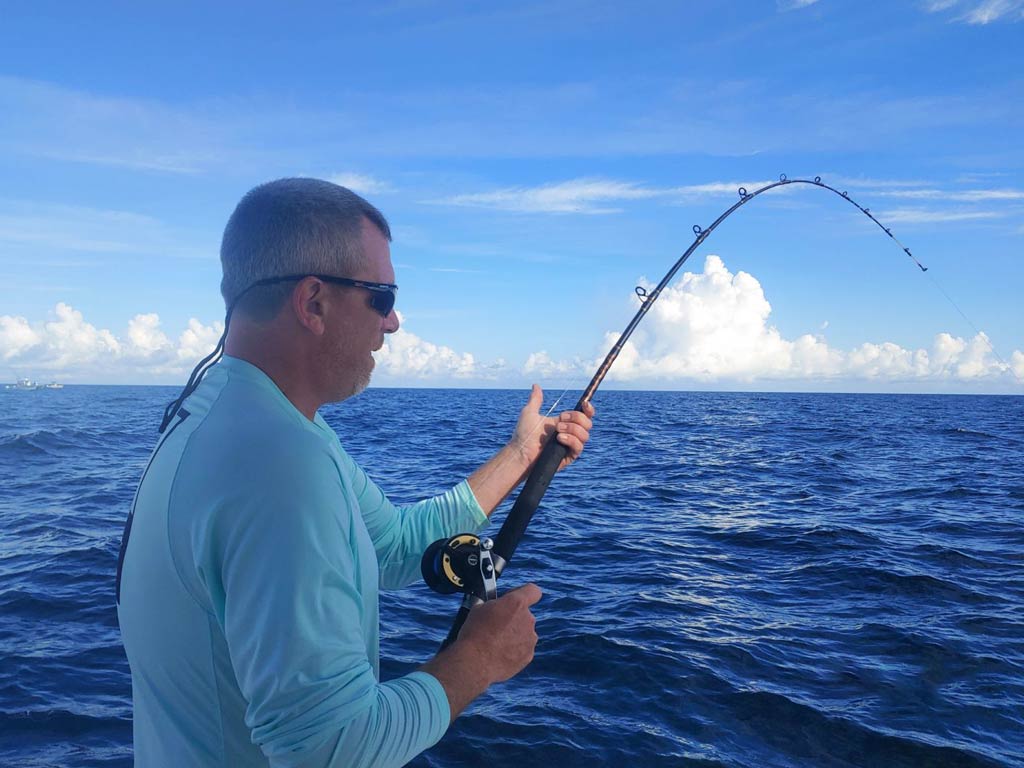
We already mentioned this technique while talking about Snappers and Groupers. Bottom fishing is the perfect angling method when going after bottom-dwelling fish such as these. You can’t grab their attention on the surface, so you have to lower your bait closer to the seafloor and wait for them to grab it.
To make sure your bait reaches the proper depth, use sinkers. As the name suggests, a sinker is a weight attached to your line allowing your bait to sink. To intrigue your bottom fish further, experiment with different tackle, lures, and bait presentations.
Trolling
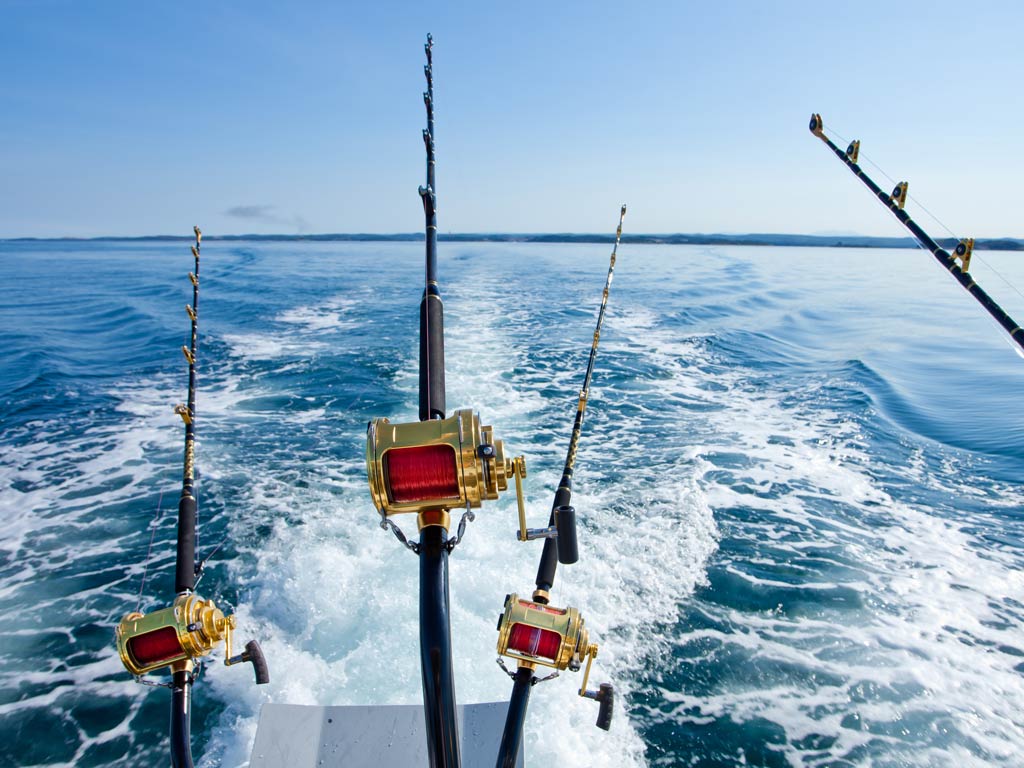
Another quite popular angling approach when deep sea fishing is trolling. Trolling has multiple advantages over other methods. It allows you to cover a wider area in search of your trophy fish. It’s suitable for targeting numerous fish species. And it’s simple. All you have to do is place your lines in the water with bait attached to them and they’ll imitate the prey of your target.
The crucial aspect of successful trolling is bait presentation. Depending on the fish you’re pursuing you should adjust your speed. Bigger King Mackerel, for example, prefer slow-paced trolling, whereas Mahi Mahi and Sailfish love a more intense chase.
Drift Fishing
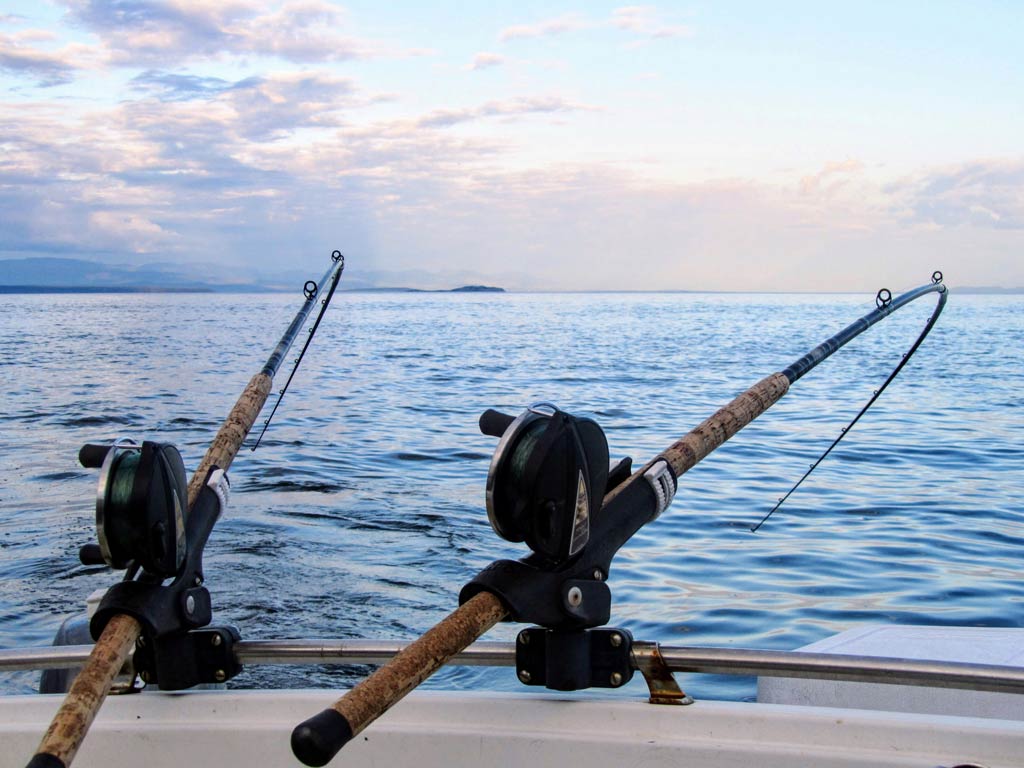
Drift fishing is similar to trolling with a slight difference in how you approach navigation. You see, with trolling you control the speed at which you want to present your bait and navigate the area you want to cover. Drifting, on the other hand, relies on the current to lead the way. This doesn’t mean you’ll lose control over your boat, it just means you’re more weather and current-dependent.
Unlike trolling which usually attracts surface-swimming predators, drift fishing can target bottom dwellers, too. You can lure any fish from Snappers to Sailfish with drift fishing. And while it sounds like you have to choose between these angling options, the reality is that you’ll probably combine them to get the most out of your deep sea fishing trip.
Top Tybee Island Deep Sea Fishing Spots
While it’s difficult to pinpoint all the best deep sea fishing locations, there are a couple of proven nearshore and offshore fishing grounds. They’re mostly found in federal waters (over 3 miles from shore). We’ll list these hotspots below to help you get going, but the wisest choice is to use fish finder devices and team up with a local captain who’ll know where the real honey holes lie.
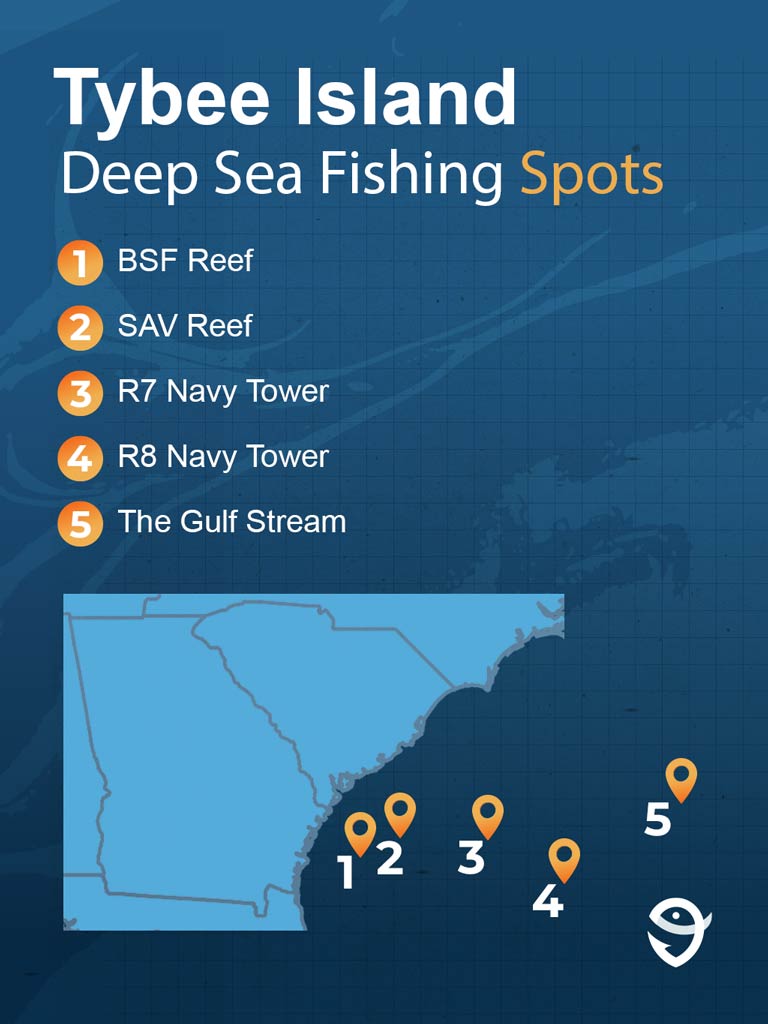
- BSF Reef. This is a nearshore artificial reef ideal for going after bottom dwellers. It’s located 4 miles off the island’s coast and reaches 29 feet in depth. The BSF reef consists of different ball-shaped objects and concrete sinkers that are home to Snapper and Grouper varieties.
- SAV Reef. Only 6 miles offshore from Tybee Island, a man-made fishery awaits you. SAV is a 40 foot deep cluster of poultry transport cages and barges used as artificial structures that provide shelter and food for species such as Snappers, Groupers, Black Seabass, and Sheepshead.
- R7 Navy Tower. Once you hit the 40-mile mark, you’ll come across one of the eight offshore towers built in the 1980s by the U.S. Navy. Each tower is a magnet for pelagic species such as King Mackerel, Tuna, and Mahi Mahi.
- R8 Navy Tower. When you pass the R7 tower and reach 60 miles offshore, you’ll come across the R8 Navy Tower. With an approximate depth of 145 feet, this far-away construction is a Wahoo and Barracuda heaven.
- The Gulf Stream. If you feel adventurous enough, there’s always the Gulf Stream. Venturing more than 80 miles offshore means reaching the warm waters of the Gulf Stream and unlocking all of Georgia’s deep sea fishing possibilities.
Frequently Asked Questions
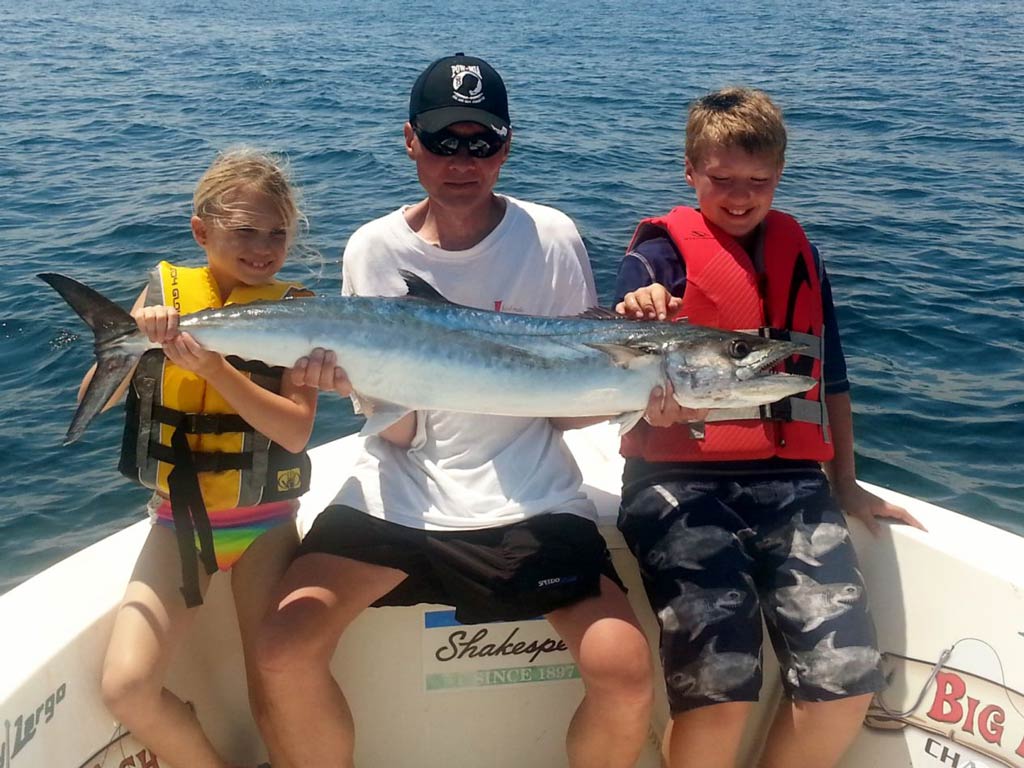
Tybee Island Deep Sea Fishing: A Bluewater Adventure
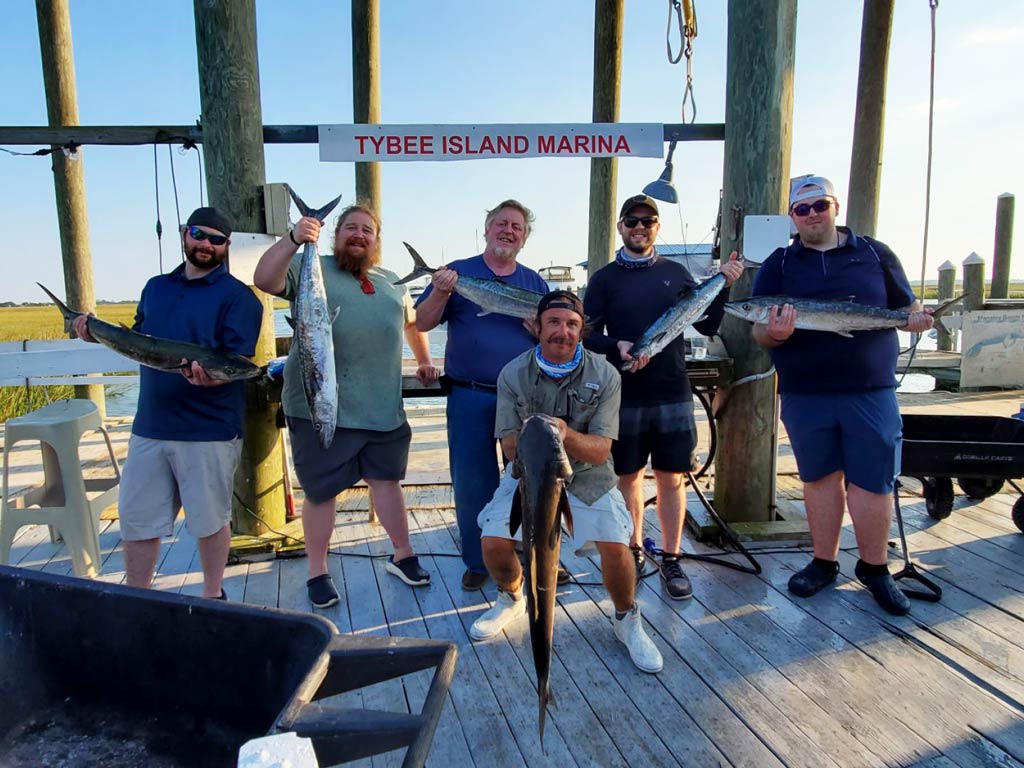
Deep sea fishing is always a good idea, and Tybee Island is a great place to kick off your bluewater adventure. Be it a family trip or serious trophy fish pursuit, deep sea fishing in Tybee Island promises something for everyone. So, take a look at our deep sea fishing offer and team up with one of the many experienced Tybee Island captains for a memorable experience out on the water.
Have you ever been deep sea fishing in Tybee Island? What did you catch? Share your bragging stories with us in the comment section below.
The post Tybee Island Deep Sea Fishing: The Complete Guide appeared first on FishingBooker Blog.
https://ift.tt/IGJuadr
0 Comments
Enregistrer un commentaire